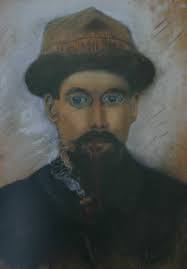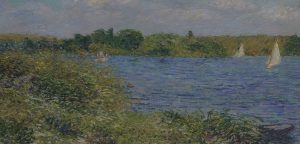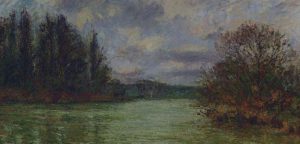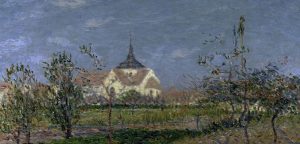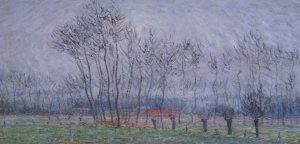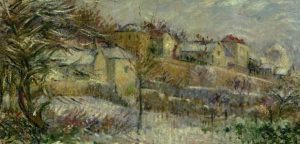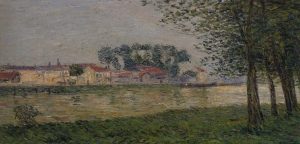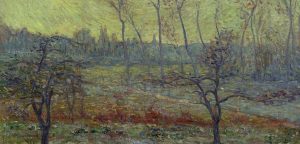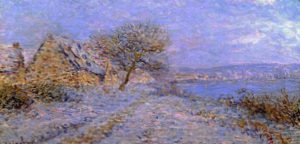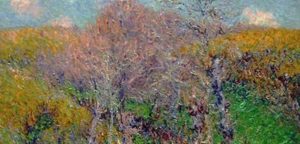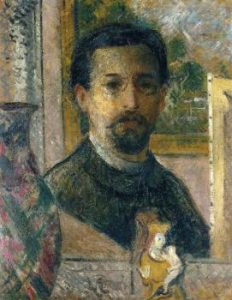Gustave Loiseau was born on the 3rd of October in 1865 in Paris.
1865 - 1935
Gustave Loiseau
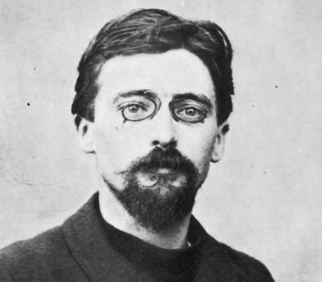
description
An outstanding French artist, Neo- and Post-impressionist, a master of landscape painting.
Gustave was born into the family of a meat shop owner. As a child, he received his first lessons from his family friend who was a decorator.
He helped him master the traditional methods of drawing and composition.
G. Loiseau used and developed several innovative techniques at once, combining them in his own original style. He brought a more gentle touch to the depicted nature into Post-impressionism, which makes his work unique.
Key Ideas:
– In the paintings of Gustave Loiseau, his passion for depicting seasons, from winter to new colds, reveals. In this case, the painter takes the same corner of nature (garden, river, edge) or harbor, rock for the storyline. Series of this kind include the image of the cathedrals. This feature of Loiseau resembles the manner of C. Monet. Moreover, Loiseau also had many plots with the streets of Paris. However, his technique gradually became unique: the point and the stroke are combined and give the landscapes flexibility and original depth.
– There are few portraits in Loiseau’s heritage, but even here he remains true to the new trends: he depicted porters in the port, fishermen, villagers. The method of the so-called “trellis” gives the master’s art softness, almost tangibility, which, of course, is a characteristic feature of his own style.
– During the rather long creative life, Loiseau tried to realize his ideas in many genres (including still life painting) and styles, not stopping at specific theories, but absorbing them and transforming them in his own way. He remained constant in one: he used a light juicy palette.
1865
1887
1888
1890
1891 - 1895
1893 - 1894
1895
1897
1900 - 1901
1903
1935
The birth of the artist
Visited the School of Decorative Arts
Thanks to the inheritance received from his grandmother, he decided to devote himself entirely to painting, moved to Montmartre, visited the School of Decorative Arts.
Took private lessons from Fernand Just Kinyon
Took private lessons from Fernand Just Kinyon.
Went to Brittany
Went to Brittany, the town of Pont-Aven, where he met Paul Gauguin, M. Mofra, E. Bernard and became a member of the so-called École de Pont-Aven.
The exhibitions
Together with other Neo-impressionists, he exhibited paintings at the gallery of Le Barc de Boutville (Le Barc) and at the Indépendants salon (Durand-Ruel’s gallery).
Participated in the sixth, seventh and eighth exhibitions of the Impressionists
Participated in the sixth, seventh and eighth exhibitions of the Impressionists and Symbolist exhibitions (Le Barc gallery); was fond of divisionism.
Returned to landscapes in the manner of Neo-impressionism
Returned to landscapes in the manner of Neo-impressionism and developed a special technique of hatching. Participated in the Salon Société Nationale.
Signed a contract with Durand-Ruelle to exhibit his paintings
Signed a contract with Durand-Ruelle to exhibit his paintings.
A great success was a special exhibition in Paris
Together with A. Moret and M. Mofra exhibited works at the gallery of New York. A great success was a special exhibition in Paris, organized by Durand-Ruelle.
Exhibited his paintings at the Salon d'Automne
Exhibited his paintings at the Salon d’Automne (“Autumn Salon”). Participated in these exhibitions regularly until 1930.
The death of the artist
He passed away on the 10th of September in 1935 in Paris.

